- Home
- Keith Douglass
Arsenal c-10
Arsenal c-10 Read online
Arsenal
( Carrier - 10 )
Keith Douglass
A special edition of the acclaimed Naval adventure series! America is held hostage…in this timely and powerful new novel written by an experienced Naval officer. A group of armed insurgents have taken control of Cuba. They've shot down an American civilian aircraft, and are holding a U.S. Marine pilot hostage. Now, Admiral "Tombstone" Magruder is forced to lead his Carrier Battle Group into a reckless counterattack planned by overzealous politicians.This time, he's trapped ― between the violent excesses of Cuban revolutionaries…and a U.S. power play that's spun wildly out of control.
Keith Douglass
Arsenal
ONE
Saturday, June 0300 Local (+5 Greenwich Mean Time)
Cuban Fulcrum 101
17,000 Feet, 50 Miles South of Cuba
Cuban Air Force Colonel Emilio Santana banked his Soviet built MiG-29 Fulcrum to the left, skirting the air defense perimeter of the American battle group. The fighter twisted through the sultry night air as though the mechanics of airspeed, altitude, and control surfaces were mere formalities in the relationship between man and machine. The advanced composite struts and fuselage were extensions of his own body, the howling jet engines an echo of the blood rushing through his arteries and veins. The single-seat fighter seemed to read his mind, translating the smallest twitches of human muscle and nerve into tactical maneuvers that would have been impossible in any other aircraft in Cuba’s inventory.
Tonight he was alone in the sky, suspended between the heavens and black water, surrounded by hard points of light that bit into the dark without dissipating it. Spattered overhead, the stars. To his right, Cuba, city lights clustered into hard gems set in velvet. Directly below him, fog seeped up from the ocean and mixed with broken cloud cover to obscure patches of water. Water and land, night and stars the world below him seemed remote and untouchable, changing in response to universal rhythms that man could neither understand nor alter.
Reality isn’t that simple. First the Soviets, now the Libyans, In both cases, the first seemingly harmless offers of technological assistance and money had led to an ominous military presence that pervaded every facet of daily life. The military advisors weren’t so easily ejected once they’d established a military presence eighty miles south of the United States.
More than just a mere presence. They are an infestation, a plague. As long as we can control them, we benefit. But as with any parasite, there is a danger that the host may suffer.
He nosed the fighter up, aiming directly at a star. The maneuver bled off airspeed, slowing his rate of travel around the latest of many American intrusions into Cuba’s sphere of influence.
Forty miles to the north, clearly visible under the full moon and through the light haze, the USS Thomas Jefferson, and her covey of escorts were finishing up the last phase of their workup operations prior to deployment. The Cubans had been watching carefully for the last two weeks as Jefferson fought a mock opposed transit through notional landmasses charted in the middle of the Caribbean. Flight operations had ceased at 2200, and the Cubans had had sole possession of the airspace surrounding their island nation since then. From his altitude, on a moonless, slightly overcast night, the only indications of the American presence were the phosphorescent green lozenges on his aircraft’s radar.
Santana sighed and shifted his attention away from the stars and to his duty. As commander of the Western Air Defense Zone, he’d wanted a personal look at the armada; assembled off his coast. American battle group workups were a normal part of life, but this one was particularly irking. This battle group included the first operational deployment of an Arsenal-class cruiser, and both Cuba and her allies were desperate for intelligence on the platform.
That the Americans had no compunction about conducting military maneuvers so close to the coast of his nation irritated him. Had the situation been reversed, the Americans would have strenuously objected to a foreign power conducting war maneuvers off their coast. Why was it that the Americans were unable to understand Cuba’s objections?
Not unable just unwilling in their arrogance to even entertain the idea of Cuba as an equal, as a leader in the Caribbean basin. Yammer as they will about self determination and democracy, the Americans understand power, only military power. They have chosen the weapon in this duel, but we will choose the time.
A new speck of light on his RP-29 coherent pulse Doppler radar caught his attention. Code-named Slot Back by NATO, the MiG-29’s radar had a search range of fifty-four nautical miles, and was collimated with laser range finder and infrared search/ track sensors. Using data supplied by the radar, the MiG was capable of launching AA-8 Aphid infrared air-to-air missiles or AA-10A Alamo medium-range radar-guided antiair missiles. A GSH-301 in the port wing root carrying 150 rounds completed its armament.
The new contact what was it? He studied the radar screen carefully, noting that it was growing stronger by the minute. Not a military aircraft. The pulse size was too small, and the wavering edges of the lozenge indicated that the radar was having a difficult time maintaining any resolution on it. The first tingles of adrenaline tickled his senses.
A light aircraft, then. Possibly civilian, or a small reconnaissance or spy aircraft deployed from the Florida coast, only eighty miles to the north. At 130 knots, the contact could be either a helicopter or a fixed-wing aircraft.
Whatever it was, it warranted further investigation.
His orders were to maintain radio silence pending identification of any threat or an indication that a contact was proceeding into within twelve miles of the Cuban coast.
Santana rolled the MiG out of its turn and vectored off toward the contact.
He glanced down at the SO-69 electronic countermeasures display. Aside from the normal search radars from the carrier and her escorts, as well as the familiar signature of the Cuban land-based air search radar, there were no new contacts. Odd, that. But understandable. Only an aircraft wanting to avoid detection would make the journey toward Cuba without radar. His level of excitement ratcheted up another notch.
The new contact was still sixty miles to the north of his position. He shoved the throttles forward slightly, accelerating to 520 knots. At that speed, he was only minutes away from obtaining a visual. He swore quietly at the layer of low clouds at five thousand feet and checked the altitude of me unknown contact. As he’d suspected, it was right in the middle of the layer, using the clouds for cover. Again, more suspicious conduct.
Madre de Dios! What were the Americans thinking?
Anger shattered the traces of his earlier mystical contemplation of the sky and the sea. Exercise operations, however odious, were expected.
But expanding the routine into an open affront to Cuba’s domestic airspace such arrogance!
Did they really think they could make a covert approach on the Cuban coast without being detected?
If so, it was time to teach them a lesson.
0305 Local (+5 GMT)
Combat Direction Center (CDC), USS Jefferson
The tactical action officer frowned and spun his track ball cursor over to the new contact. He clicked once, calling up data on a small secondary screen. Airspeed, altitude, IFF International Friend or Foe signal were all indicative of a small civilian aircraft.
CDC was the carrier’s nerve center. Sensor data from every radar and ESM electromagnetic sensor detection suite in the battle group was relayed to the carrier’s computers, analyzed, compared with other sensor data, and projected onto the blue large-screen display in the forward part of CDC.
Hardly a threat to an aircraft carrier, but where the hell did it come from?
The new symbol had popped into being on his screen without any prio
r warning from Tracker Alley, the long array of air search and correlation consoles that took up a quarter of the CDC spaces. He keyed the microphone to his headset with the foot pedal. “Track supervisor, what is this?”
The tinny voice sounded bored. “Don’t know, sir. We just gained contact a few moments ago. It’s off any commercial air routes, and it’s not one of ours.”
“Any ideas?”
“No. That’s why I’ve got it designated as unknown.
There’s no IFF squawk from her, and no flight plan for the route.”
The TAO sighed and jotted down the details in his watch log. He turned to the CDC watch officer, the person normally responsible for the operations of CDC. “Let’s do the standard challenge and reply. That contact’s course puts him well to the west of us, but he’s transiting our area.
Could be drug runners, could be a civilian pilot who’s lost.
My bet is on the former rather than the latter.”
The CDC officer nodded and reached for the microphone.
“I bet we don’t get an answer.”
“No bet. I’d say you’re right. We’ll notify the Coast Guard.”
“Unidentified air contact at-” the CDC officer glanced at the latitude-longitude readout on his screen” thirty-two north, seventy-two west, altitude five thousand feet, speed one-three-zero knots, this is USS Thomas Jefferson. Over.”
He waited for a few minutes for a reply, then repeated the call-up.
After the third time, he turned back to the TAO. “No response, sir.
Big surprise.”
“Notify the Coast Guard in Miami. We’ll let the normal law enforcement handle this.” The TAO turned back to the briefing sheet before him, wondering whether his summaries of the previous day’s flights and engagements would take long enough to kill the rest of the watch.
“Keep an eye on it,” the TAO said. “If its course puts it within ten nautical miles of the battle group, we’ll talk to Tactical Rag Command Center about what to do. Until then, just be sure the data is relayed to SOUTHCOM. We’ll let them worry about it.”
0310 Local (+5 GMT) }
Commander, Southern Forces, Miami
“New contact,” the operations specialist at SOUTHCOM j announced. “My bet is it’s a drug runner.” (The watch officer at SOUTHCOM, the composite commander responsible for all areas south of the continental United States, glanced at the big-screen display. “The Coast Guard knows about it?”
The operations specialist nodded. “They’re checking into it, but there doesn’t appear to be a flight plan. Not much we can do about it now, but they’ll be alert for a contact on the return from Cuba.”
The watch officer frowned. “Could be another one of those rescue operations. We had two last month, you remember. American activists trying to evacuate relatives from Cuba. Let’s make sure INS is in the loop.”
“Already on it,” the operations specialist announced smugly.
0315 Local (+5 GMT)
Fulcrum 101
The small contact was now five hundred yards in front of him and one thousand feet below. There was still no visible contact, and the Fulcrum was closing rapidly on the slower target.
“And if you had honorable intentions, my friend, you would be showing your running lights,” Santana said aloud.
“Since you aren’t, I suspect you don’t want me to see you.”
The contact was not painting brightly on his radar scope.
Santana was certain he hadn’t been detected in return, since the contact was emitting no radar pulses. He waited until he was only five hundred feet behind the small contact and, still without visual contact, put the Fulcrum into a steep climb. If he judged correctly, the wake from his two Klimov-Sarkisov RV-33 turbofan engines would buffet the smaller aircraft, letting him know that he’d been detected.
; Just to be sure, Santana slammed the throttles forward and kicked in the afterburners.; He ascended to ten thousand feet, smugly certain that the civilian aircraft knew it was no longer alone in the skies. He stood the Fulcrum on its tail, then executed a sharp turn downward. He watched the radar scope carefully, judging his approach angle. If this worked correctly, he would cut directly in front of the small contact.; When the scope indicated he was almost in front of the smaller plane, Santana flipped on all of his external lights.
He watched on the scope as the small aircraft executed a hard turn to the right, and grinned. Whatever the contact was, its maneuverability and speed were no match for the Fulcrum, and he was willing to bet that the other pilot would need a change of underwear as soon as he was back on the ground.
Wherever that might be. He frowned, wondering why the Americans had decided to pull such a stupid tactical maneuver.
“Perhaps another pass will dissuade you from your plans,” Santana said out loud. He gained altitude and prepared to repeat the maneuver.
0320 Local (+5 GMT)
CDC, USS Jefferson Combat Direction Center
“A nice little game of chicken?” the TAO asked. “That’s our Cuban shadow that’s been watching all day, isn’t it?”
“Or his relief” The CDC officer looked amused. “Do you know what would happen to us if we tried to harass an inbound aircraft like that to turn it back from the coast?
We’d all be facing a court-martial.”
The TAO frowned. “Not something I’d want to do even in relatively clear weather like this,” he remarked. As an FA-18 pilot, the TAO was well aware of the range inaccuracies that could creep into any radar system. “He’s getting so close to that contact that we’re getting a merging of the two blips on radar.”
“I’m not sure which would be worse to be in the Fulcrum trying to pull it off, or to be in the small plane he’s harassing.”
The CDC officer shook his head. “Either way, it’s a hell of a way to make a living.”
0328 Local (+5 GMT)
Fulcrum 101
10,000 Feet Santana was not pleased. Despite two buffeting passes, the light aircraft continued inbound on Cuba. At first he’d assumed it was just a smuggler plying the regular route between Florida and Cuba, but it hadn’t reacted like any drug dealer he’d seen yet. He glanced back to his left at the battle group. Was there some other reason for its foray into Cuban airspace or was it mere coincidence that the American battle group was in the same vicinity? He toggled the comm circuit to relay his observations to the Cuban controller.
For the last five months, the area around the western end of Cuba had been closed airspace. It had only taken a couple of weeks before the word had spread throughout the close-knit smuggling community, and it had been months since there’d been an unauthorized intrusion into the area.
The Fuentes Project he grimaced in frustration. Protecting it from outsiders had been his highest priority as Western Air Defense Zone commander, and it wouldn’t do for the first unauthorized intrusion to occur during one of his personal surveillance missions.
“Continue maneuvers as briefed.” The ground control intercept officer, or GCI, sounded bored even over the circuit’s static. Santana smiled.
Perhaps he should have consulted with the GCI before the first warning maneuver, but this permission, in effect, granted retroactive absolution for the maneuver.
“Commencing second run,” he said as he toggled the circuit mike.
“Estimate contact is forty minutes from the coast.”
“Do you require assistance?” the GCI asked.
“I don’t think so,” Santana said. He rolled his eyes in disgust. As if the Fulcrum were incapable of handling one small, turboprop aircraft. Even the mighty F-14 Tomcats on the carrier’s deck were little match for this fighter.
At ten thousand feet he tipped the nose of the Fulcrum down, heading for the deck at five hundred knots. He watched the airspeed indicator slowly creep to the right as the Fulcrum traded altitude for speed. A little closer this time, perhaps, with full lights on blazing the entire way.
“Fulcrum 101, GCI!�
�� The controller’s voice was taut with tension.
“Contact’s course indicates it is on an intercept course with the Fuentes Base. Imperative that no overflights are allowed. If the contact cannot be turned back, take with missiles.”
Santana sucked in his breath. Weapons-free permission?
Now that was something new.
The briefing he’d received indicated that some form of military research was taking place at the small naval base, but no details had been forthcoming. Rumor had it that a new, powerful, land-based intercept radar site was being installed, but he hadn’t found anyone to confirm that yet. It irked him. As the officer responsible for enforcing the no-fly zone, he should know exactly what was down there, particularly if it could pose a problem for his own squadrons of interceptors.
He watched the radar scope and considered his options.
When could he legitimately claim that he’d tried to turn back the aircraft? By leaving the decision of when to fire up to him, the GCI officer was effectively transferring responsibility for the engagement to the pilot.
The Soviet-trained GCI controllers were not noted for their boldness in combat. Nor were they often willing to disturb their superiors for direct orders. They walked a fine line between maintaining tight control over their assigned intercept aircraft and doing everything possible they could to avoid responsibility for anything that happened.
Well, this time they’d made a mistake, as far as he was concerned. His orders from the GCI required him to keep the contact away from Cuba.
Even if a later tribunal decided that the attack was not authorized, he could be relatively certain that the blame would be fixed on the GCI officer rather than on him. He reached out and touched the small recorder he’d taped to the instrument panel, glad he’d begun taking the precaution of recording the transmissions on his own.
A little closer this time. He eased the Fulcrum to the right, instantaneously calculating the intercept angle and the relative airspeeds of the two aircraft. This pass, and then he gasped as the contact suddenly accelerated on the screen, then twisted the Fulcrum into a hard, braking turn. Too late.

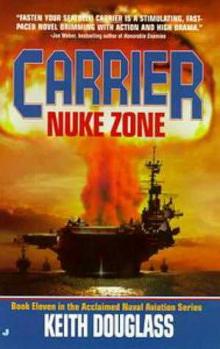 Nuke Zone c-11
Nuke Zone c-11 Seal Team Seven 6 - Battleground
Seal Team Seven 6 - Battleground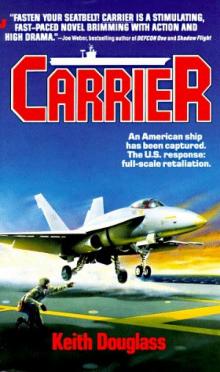 Carrier c-1
Carrier c-1 Island Warriors c-18
Island Warriors c-18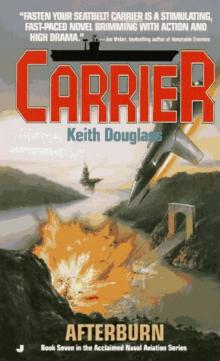 Afterburn c-7
Afterburn c-7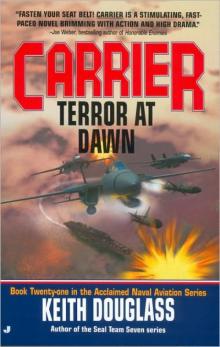 Terror At Dawn c-21
Terror At Dawn c-21 Specter sts-2
Specter sts-2 Joint Operations c-16
Joint Operations c-16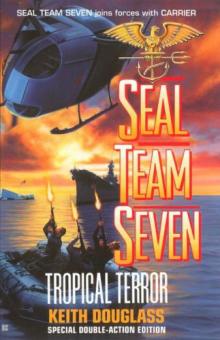 Tropical Terror sts-12
Tropical Terror sts-12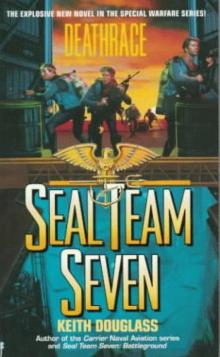 Seal Team Seven 7 - Deathrace
Seal Team Seven 7 - Deathrace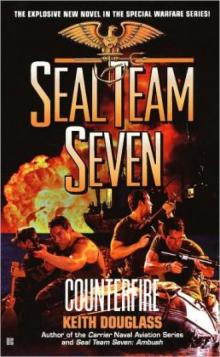 Counterfire sts-16
Counterfire sts-16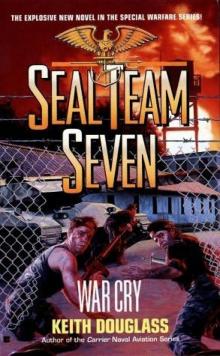 War Cry sts-9
War Cry sts-9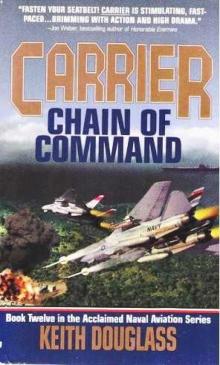 Chain of Command c-12
Chain of Command c-12 Brink of War c-13
Brink of War c-13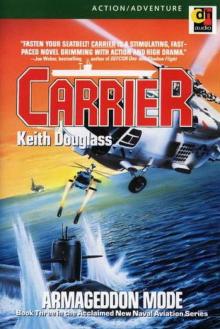 Armageddon Mode c-3
Armageddon Mode c-3 Arsenal c-10
Arsenal c-10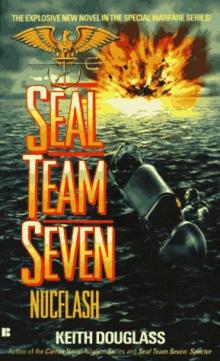 Nucflash sts-3
Nucflash sts-3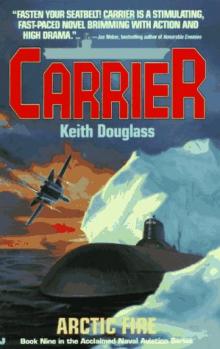 Arctic Fire c-9
Arctic Fire c-9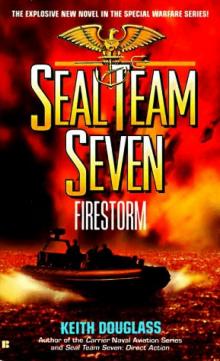 Firestorm sts-5
Firestorm sts-5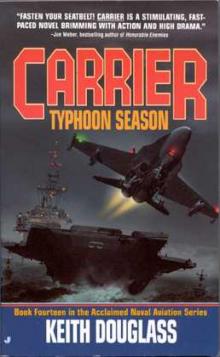 Typhoon Season c-14
Typhoon Season c-14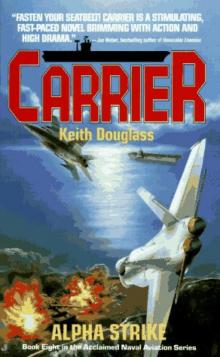 Alpha Strike c-8
Alpha Strike c-8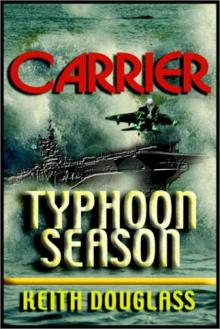 Carrier 14 - TYPHOON SEASON
Carrier 14 - TYPHOON SEASON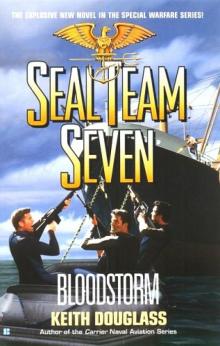 Bloodstorm sts-13
Bloodstorm sts-13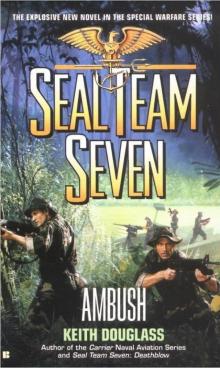 Ambush sts-15
Ambush sts-15 First Strike c-19
First Strike c-19 Flame Out c-4
Flame Out c-4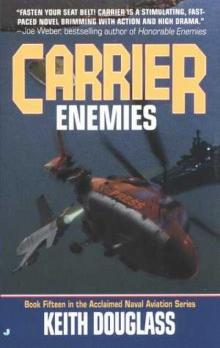 Enemies c-15
Enemies c-15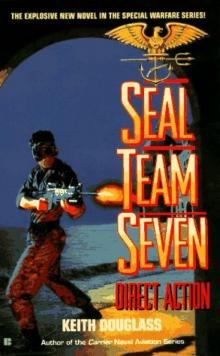 Seal Team Seven 04 - Direct Action
Seal Team Seven 04 - Direct Action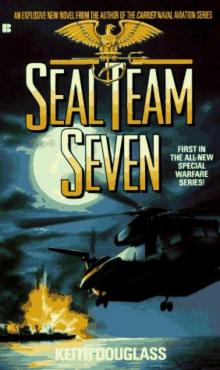 Seal Team Seven 01 - Seal Team Seven
Seal Team Seven 01 - Seal Team Seven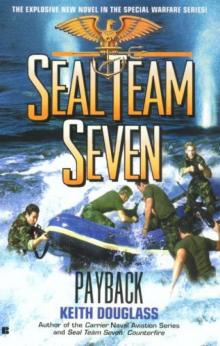 Payback sts-17
Payback sts-17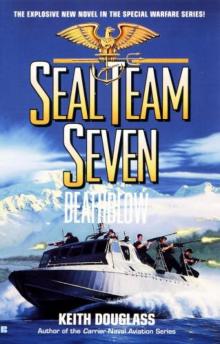 Death Blow sts-14
Death Blow sts-14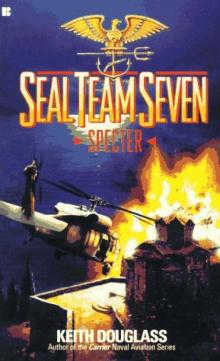 Seal Team Seven 02 - Spector
Seal Team Seven 02 - Spector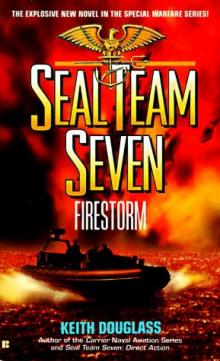 Seal Team Seven 5 - Firestorm
Seal Team Seven 5 - Firestorm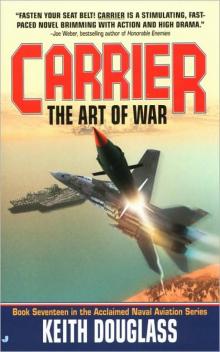 The Art of War c-17
The Art of War c-17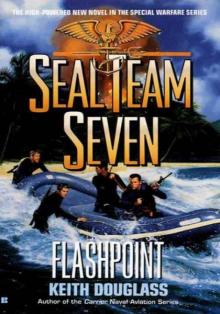 Flashpoint sts-11
Flashpoint sts-11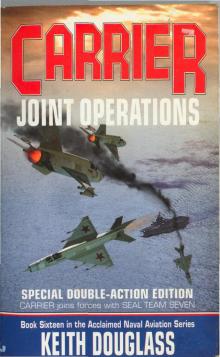 Carrier - Joint Operation Book 16
Carrier - Joint Operation Book 16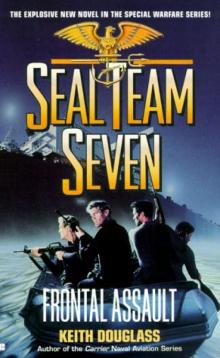 Frontal Assault sts-10
Frontal Assault sts-10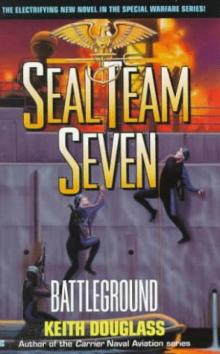 Battleground sts-6
Battleground sts-6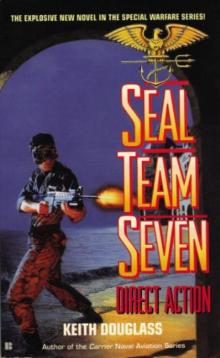 Direct Action sts-4
Direct Action sts-4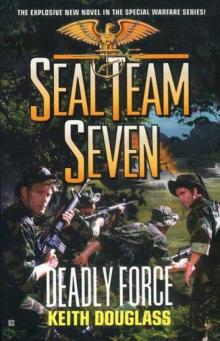 Deadly Force sts-18
Deadly Force sts-18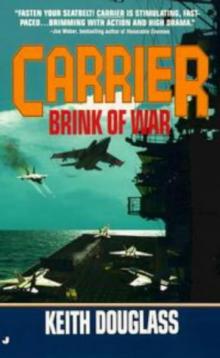 Carrier 13 - Brink of War
Carrier 13 - Brink of War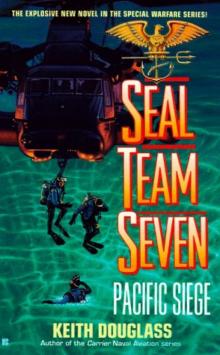 Pacific Siege sts-8
Pacific Siege sts-8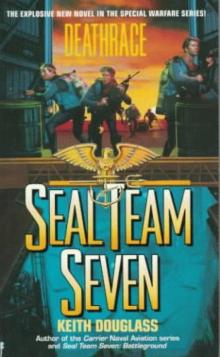 Deathrace sts-7
Deathrace sts-7